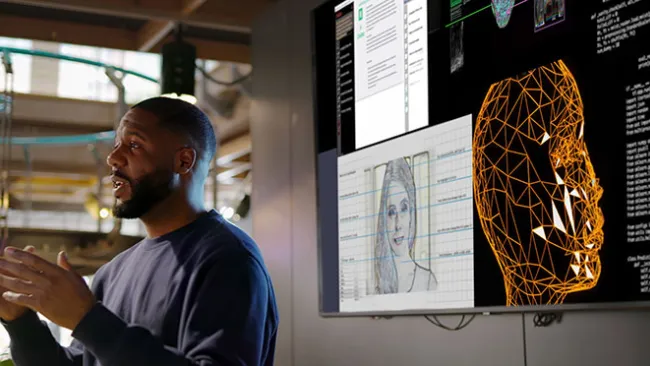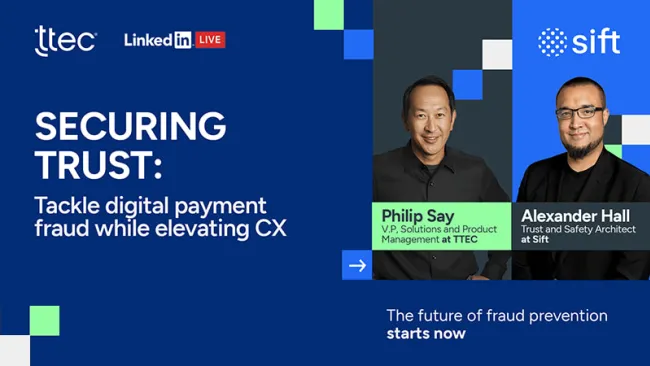Customer loyalty is the product of great customer experience. And in many cases, your company’s customer experience becomes your brand. Its importance in the business world has elevated, which means investment dollars and scrutiny have likely increased along with it.
The customer engagement technology decisions and investments you support will influence the type of experience you create for your customers. But before you can answer the question of how to improve customer engagement through technology, you must first better understand the customer behavior of your customers. And in today’s fast-paced environment, companies are looking to stand out with real-time experience initiatives based on highly targeted and “in the moment” interactions with individual customers. But to create memorable connections with customers and increased customer loyalty requires customer engagement innovation.
Today’s superior customer experiences include innovations such as mobile customer engagement, personalization, omnichannel interactions, and real-time decision making. They need cloud systems and data warehouses to capture and integrate enormous amounts of data.
So where to start with customer engagement management? Where everything starts—with data. It is the key enabler of a superior customer experience and an optimized customer engagement platform. Yet a common pitfall for those in charge of the customer experience is that they think only of the data within their sphere of influence. Marketers look at marketing data. Customer service leaders look at customer service data. Instead, data needs to be considered within the context of the individual customer, not business unit. And it’s up to the company to source or connect whatever data is needed to enable a great customer experience.
Customer interactions with your products and services provide an abundance of customer data and insights
Depending on if you’re a B2C or B2B company, an online or brick-and-mortar business, and depending on the business you’re in, you will have different types of data to work with. That’s why the idea of customer context will help guide decision making. The goal is to leverage data in the moment, within the context of the individual and your relationship to him or her—who they are, where they are, what we already know about them, and potentially what they are doing. For example, Nordstrom has immediate relevant interaction potential if it knows that Frank (identity), who has previously purchased several Eton shirts (history), is currently shopping in the men’s department (location/context) at Nordstrom in Scottsdale, Arizona. The key is being able to access and leverage appropriate data in the moment to build customer support.
It potentially requires mixing first-party data with third-party data, partner data, contextual data, and social graphs, enabling an interaction that can hopefully delight the customer. And often it creates a data soup of complexity. Sources include third-party user data from providers like Acxiom or Experian, social data such as what they are saying on Twitter, or what is known about others in their Facebook social graph.
Other innovative customer engagement ideas can come from data sources such as GPS, iBeacon, and wearables, real-time online context culled from website content, social media insight from Facebook, Twitter, Instagram, the Internet of Things (IoT), and elements of the customer journey that can be scaled with marketing automation tools. Many people talk about the concept, but due to the underlying technology challenges, few are actually capable of putting this data into action in a comprehensive, contextual way.
This is where the idea of the Chief Marketing Technologist (CMT) comes from. According to an article in the Harvard Business Review, “The job of CMTs is to align an organization’s marketing technology with its business goals, serve as a liaison to IT, and evaluate and choose technology providers. The best CMTs set a technology vision for marketing and are associates of innovation.” The CMT will be more likely to bridge the typical gap between IT and business to glean the most valuable insight for each customer. The CMT can provide customer engagement management to determine which data is most important, and who in the company will make the best use of it to improve customer relationships.
Improve customer engagement by focusing on customers before data
With a tech-savvy and customer-centric decision-maker in place, the next step is to implement a data experience management platform. That in itself is a complex undertaking. Data is arriving from different programs and sources, at different times and frequencies, in different formats. To help you in that process, take a look at our customer experience checklist, 5 Simple Ways to Optimize Voice of the Customer and Speech Analytics Data. Companies must decide what connectors their platforms will have to generate the most impact and drive business results. In many cases, data management platforms are pre-built third-party products, due to their complexity (Big Data, scale, integration with data providers, etc.) and the fact that building and maintaining such a platform is not typically a core competency for the business. Customer engagement leaders, even CMTs, should focus on how best to apply these solutions to their own customer engagement needs, and not worry about the plumbing necessary to manage it.
The good news for customers is that when it comes to data solutions, I am seeing a shift in mindset from IT to customer considerations. Customer Data Platforms (CDPs) are beginning to replace Data Management Platforms (DMPs) to drive decision making. Their goal is the same, but customer data platforms are more narrowly focused, designed to “provide marketers with an integrated customer database that can support coordinated programs across multiple channels,” according to a research report from Raab Associates. Customer data platforms meet the needs of today’s customer engagement leaders as a “marketer-controlled system that supports external marketing execution based on persistent, cross-channel customer data,” the report states. It identifies individual customers and uses unique identifiers to map data to each customer, compared to data management platforms that at best only identify data connected to behavioral or demographic segments, for example.
Customer data platforms are designed for multichannel environments, linking customer-related data from a variety of customer journey touchpoints. They provide access to a holistic view of the customer, enabling insight, not typically marketing execution or automation processes. They are the first step in leveraging data to understand and engage with your customers better.
Another trend is the desire to hire data scientists outside of IT—within marketing, customer service, and sales, for example—to crunch numbers, analyze reports, and leverage integrated data most effectively. Those scientists are hard to come by, however. The Wall Street Journal reported that universities are “struggling to produce graduates equally skilled in topics as varied as math, computer science, business administration.”
Instead, customer engagement technologies are trying to fill the gap. Exploratory Business Intelligence tools enable analysts to interactively explore huge data sets and uncover insights. Advanced predictive modeling tools can identify where and when to take action. And machine learning creates algorithms that can identify relevant “signals” or relationships inside the data, considering more attributes than would ever be possible before with traditional tools and resources. These offerings are opening up the world of context that’s so necessary to real customer engagement. According to an April article in Wired, companies are using machine learning to advance their churn analysis and prevention, real-time recommendations, and fraud analysis and prevention. And, with so many companies out there touting machine learning capabilities, it is becoming quite a challenge to differentiate and select from the plethora of programs. This is another reason why having a CMT is so important.
Conclusion: Customer engagement innovation requires optimized customer engagement management
One thing to keep in mind is that when it comes to customer engagement strategies, there is no technology panacea to ensure loyal customers and increased customer retention. Innovation is continuously impacting this landscape, and fickle customers often change their expectations and behavior. My recommendation is to stay technology agnostic where possible about new solutions. Take advantage of “Lean” approaches to experiment by taking an iterative approach to technology design, development, and deployment. Test and learn to figure out what works in your domain and for your specific customers. Think of the customer's satisfaction first, and the technology will likely follow.

















